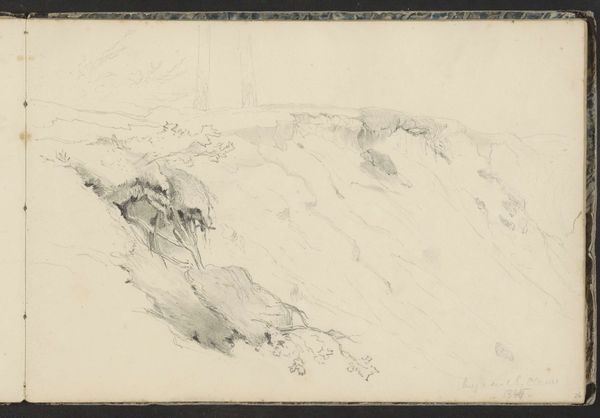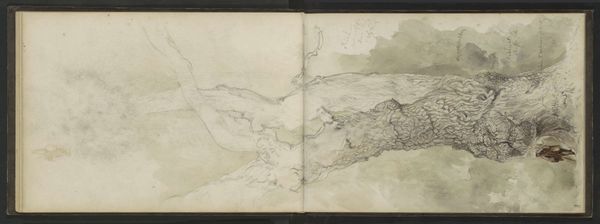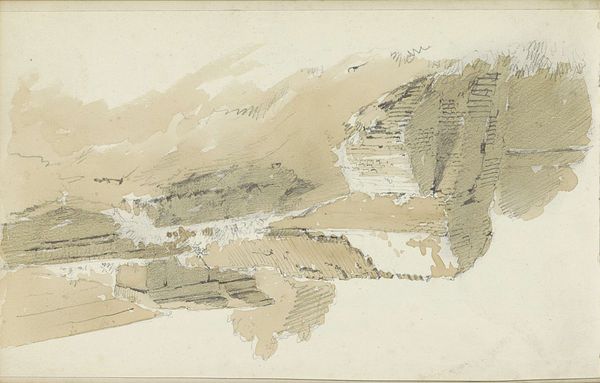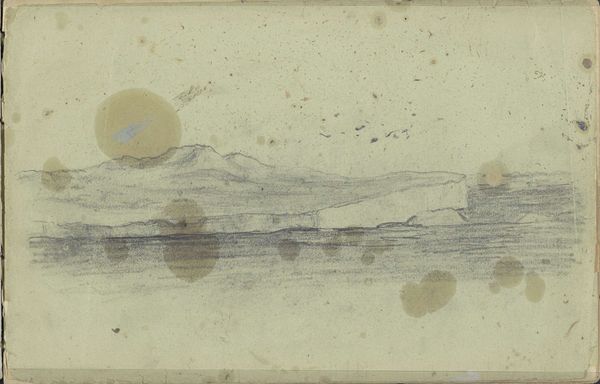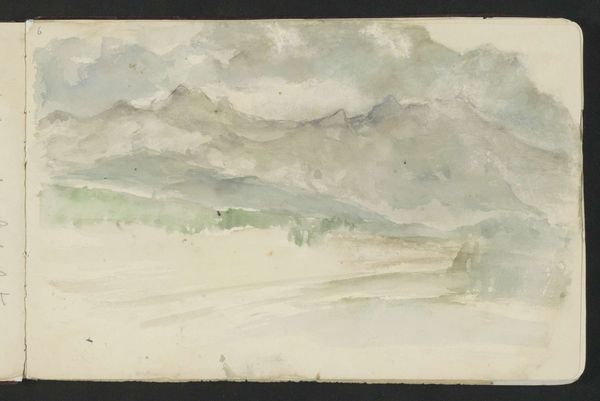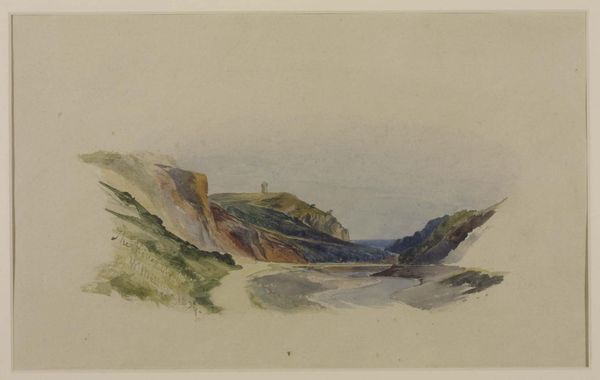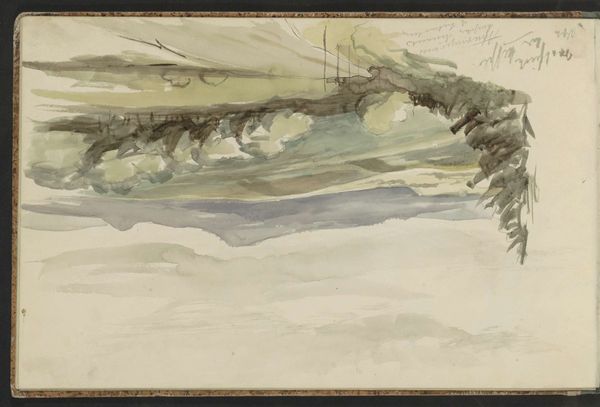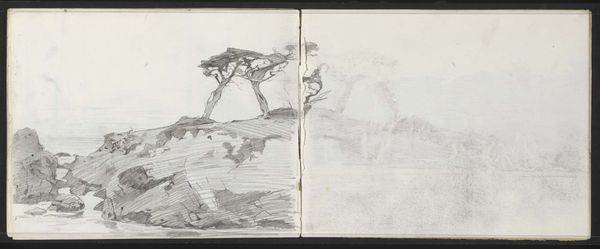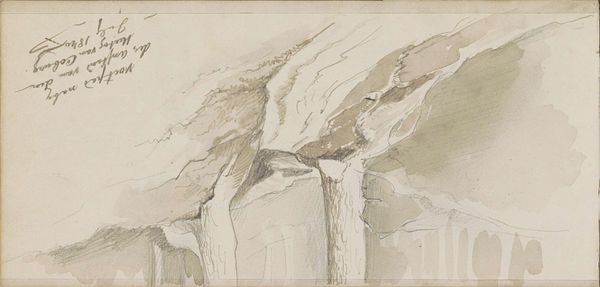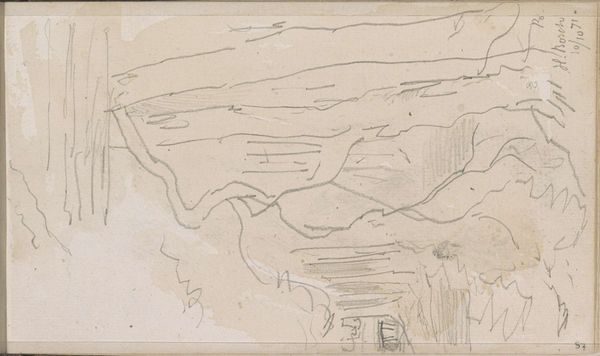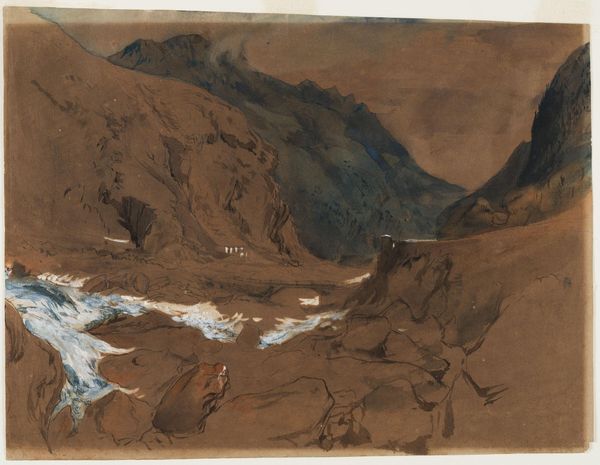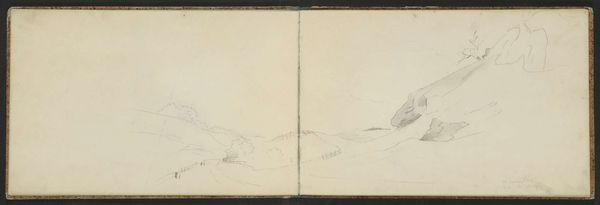
Copyright: Rijks Museum: Open Domain
Editor: We are looking at Jozef Israëls’ "Berglandschap in Pontresina," a watercolor sketch from around 1869, housed here at the Rijksmuseum. It's delicate and muted, almost like a memory. The mountain peaks fade into the sky. What stands out to you, looking at this work? Curator: It's fascinating how Israëls captures the *idea* of the mountains rather than a precise rendering. Look at the use of light and shadow—the hazy peaks suggest the sublime, echoing a longing for something beyond the tangible world. Think about Romanticism's obsession with nature's power. Does the unfinished quality evoke feelings of nostalgia or impermanence to you? Editor: Definitely impermanence. It feels transient, like a fleeting glimpse. It reminds me of sketches by Turner; was he influential for Israëls? Curator: Yes, certainly. And it makes sense. Israëls likely absorbed some of the symbolic language developed by the Romantics: mountains as enduring power, the soft watercolour washes reflecting transience and a personal feeling towards the subject. Does the limited palette speak to you in any way? What kind of emotions does it elicit? Editor: Melancholy, perhaps? It feels like looking back on a cherished moment, faded by time. It's a contrast: a monumental subject conveyed so fleetingly. Curator: Precisely. The lightness reflects both the physical qualities of watercolour and something deeper: the attempt to capture feelings of longing and the impact of landscape on the individual. Seeing it this way enriches my experience; it’s more than just scenery. Editor: I agree, considering the cultural weight given to landscape and nature provides a much richer insight.
Comments
No comments
Be the first to comment and join the conversation on the ultimate creative platform.
